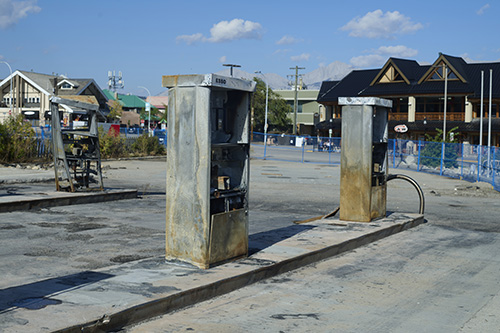What is an Abdominal Aortic Aneurysm?
An abdominal aortic aneurysm is an bulge in the abdominal aorta.
Is an Abdominal Aortic Aneurysm serious?
Yes! Although most people who have aneurysms don’t have any symptoms, a large aneurysm can burst and cause life-threatening bleeding.
What are the risk factors?
- Tobacco use. Tobacco use is the biggest risk factor for AAA. The longer you’ve smoked or chewed tobacco, the greater your risk is.
- Age. AAA occur most often in people age 65 and older.
- Atherosclerosis. The buildup of fat and other substances that can damage the lining of a blood vessel, increases the risk of an aneurysm.
- Male. Men develop AAA much more often than women do.
- Family history. People who have a family history of AAA are at increased risk of having the condition. People who have a family history of aneurysms tend to develop aneurysms at a younger age and are at higher risk of rupture.
Who should be screened?
| Population | Recommendation |
|---|---|
| Men Ages 65 to 75 Years who Have Ever Smoked | The USPSTF recommends one-time screening for abdominal aortic aneurysm (AAA) with ultrasonography in men ages 65 to 75 years who have ever smoked. |
| Men Ages 65 to 75 Years who Have Never Smoked | The USPSTF recommends that clinicians selectively offer screening for AAA in men ages 65 to 75 years who have never smoked rather than routinely screening all men in this group. |
| Women Ages 65 to 75 Years who Have Ever Smoked | The USPSTF concludes that the current evidence is insufficient to assess the balance of benefits and harms of screening for AAA in women ages 65 to 75 years who have ever smoked. |
| Women Who Have Never Smoked | The USPSTF recommends against routine screening for AAA in women who have never smoked. |
How is the screening done?
Ultrasound is the standard screening tool. It has a sensitivity and specificity approaching 100 and 96 percent, respectively. It can measure the width of the abdominal aorta and then determine whether there is a bulge.
What happens after screening?
Normal (No bulge) – Congratulations! You don’t need to be screened again.
Small bulge (3.0-3.9 cm) – You should be re-checked in 1-2 years.
Medium bulge (4.0-5.4 cm) – You and your provider will discuss what to do next. You should probably be re-checked in 6 months.
Large bulge (more than 5.4 cm) – You and your provider will discuss what to do next. You may need surgery.
What are the benefits of screening?
AAA screening can find large bulges that might rupture if they are not repaired. It can also find smaller bulges that can be treated with medicine or simply watched carefully over the years. A study of men ages 65 to 75 showed that those who have the screening are less likely to die of AAA rupture.
What are the risks of screening?
AAA screening doubled the rate of AAA-associated surgeries, largely driven by an increase in elective surgeries. Repairing an AAA can be very risky. With open surgery , in which the surgeon makes a large cut in the belly and repairs the aorta, 4 to 8 out of 100 people die during surgery or within 30 days. With an endovascular procedure, in which the surgeon inserts a tube called a stent graft through an artery in the groin, 1 out of 100 dies within 30 days. After the surgery, about 15 % of the patient might need a second procedure or surgery to fix the complications.
Summary
Now you can see why it’s so important to talk to your doctor about whether the benefits of AAA screening outweigh the risks in your case.
The best approach to prevent an aortic aneurysm is to keep your blood vessels as healthy as possible. That means taking these steps:
- Quit smoking or chewing tobacco.
- Keep your blood pressure under control.
- Reduce cholesterol and fat in your diet.
References from US Preventative Services Task Force 2014.






